It looks like you've stumbled upon a page meant to be read by our code instead of viewed directly. You're probably looking for this page.
Book of the Day Roundup June 1-5, 2020
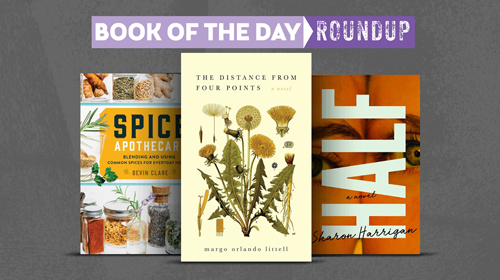
The Electric Baths

Jean-Michel Fortier
Katherine Hastings, translator
QC Fiction
Softcover $19.95 (192pp)
978-1-77186-214-1
Buy: Local Bookstore (Bookshop), Amazon
Jean-Michel Fortier’s The Electric Baths sets its compressed intrigue in a village where everyone seems to know everyone else’s business.
Though the novel is brief, its characters are complex, replete with quirks, anxieties, hope, disillusionment, and the collective identity that people in a small town often share. Communication may be limited in their vague era of horse-drawn carts and few telephones, but old Mr. Roux is sure to snatch up each new happening like “an apple from a fruit stall” and spread the news with nasty glee.
There is prideful Louise Beurre, who ran away with the circus and had a brief career as an actress in Paris, and who is now a “big, buttery flop,” according to Mr. Roux, forced to return to her strange hometown. Renée struggles with a polio-crippled leg and the torments of her mind, while widowed Bella places classified ads in the newspaper to find a new husband, longing to unite “fortunes and fates” and specifying that criminals and “destitutes” need not reply.
As the town’s peevish familiarity develops, elements of a mystery also begin to appear. A cloaked woman in the woods begs for water, putting spells and curses on anyone who refuses her. Bella’s prospective husbands arrive, yet soon vanish once she decides the relationships won’t work. Meanwhile, Renée is offered a job at Spencer Wood, the town’s imposing manor estate, a place that also houses mysterious “electric baths.” Such baths, as Spencer Wood’s owner explains, involve electrical heat issued into a “sarcophagi”-shaped box. The objective is weight loss and increased vitality, but these particular electric baths are haunted by more tragic results.
Through its fine translation by Katherine Hastings, The Electric Baths’s exquisite language and wry omniscience result in a dark, delightful landscape of curious happenings.
MEG NOLA (April 27, 2020)
Half
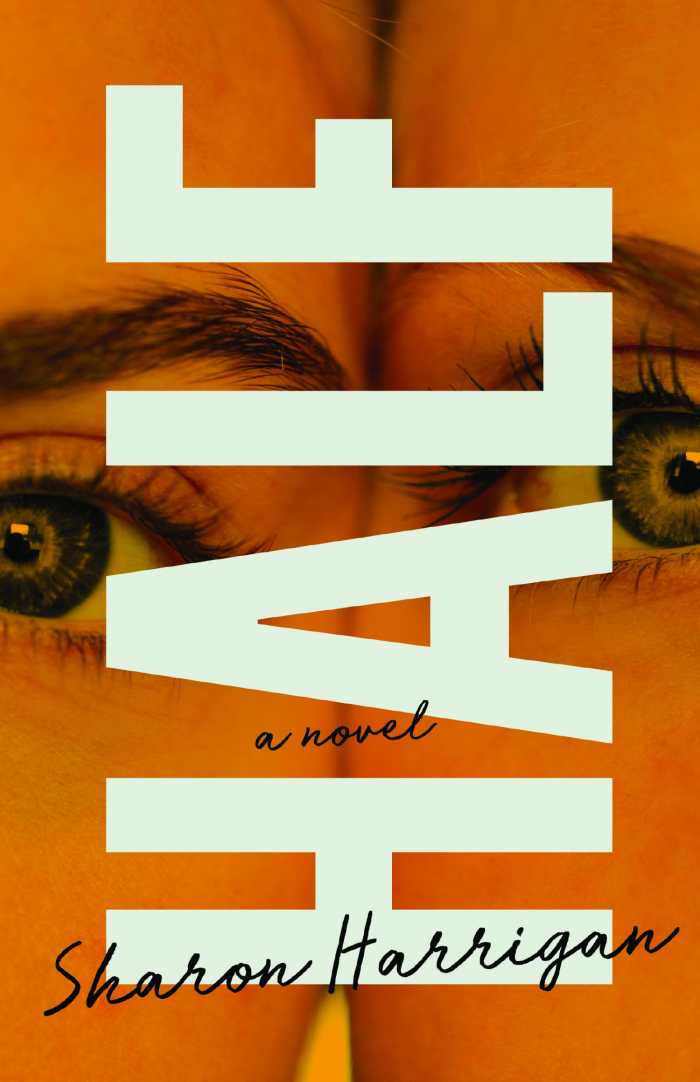
Sharon Harrigan
University of Wisconsin Press
Softcover $17.95 (280pp)
978-0-299-32854-2
Buy: Local Bookstore (Bookshop), Amazon
Sharon Harrigan’s Half mimics the triumphant defects of every family in its excavations of the peculiar remains of one. Narrated through the entwined perceptions and insights of identical twins, seldom heard by anyone other than the speakers’ mirror images, the book’s conversations and bickering are as familiar as the deranged chatter of any insanely normal mind.
The gripping prologue launches into the midst of the story’s climax. Seated on either side of their mother at their father’s funeral, the twins, a mute duet, fill in their family’s backstory at breakneck speed. They are more leisurely about pondering whichever sensory and tactile impressions speak loudest to them in the moment.
When their father’s friend accuses the twins, now wives and mothers, of having killed his best friend, the concept of murder is too preposterous to be given a second thought. Or so it would seem. After silently reminding one another that they never meant to hurt anyone, the sisters spend the rest of the book dismembering life with their father in an attempt to justify their actions.
Upon regressing twenty-five years, the twins recount their singular story in the minds and words of their innocent, five-year-old selves. Ignorant of the limitations imposed upon a language or a life by those old enough to understand the rules better, they reexperience how their father drilled spelling-rule exceptions into them so many times that he left them full of holes. The only problem with going back to confirm their undeniable victimization at the hands of their godlike father is that agony and ecstasy, torment and glory don’t always abide by the rules once hindsight enters the mix. Harrigan’s novel will leave you eagerly turning pages to discover what happens next.
LINDA THORLAKSON (April 27, 2020)
The Distance from Four Points
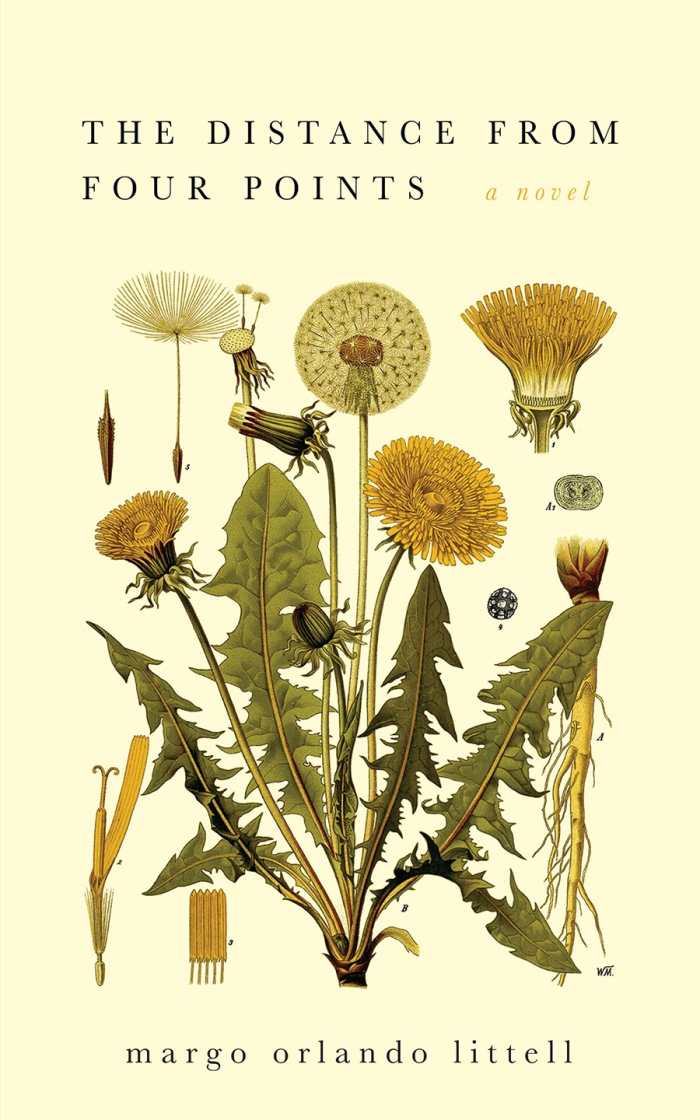
Margo Orlando Littell
University of New Orleans Press
Softcover $18.95 (224pp)
978-1-60801-179-7
Buy: Local Bookstore (Bookshop), Amazon
In Margo Orlando Littell’s quiet, compelling novel, The Distance from Four Points, a woman finds herself reeling from grief and a reversal of fortune.
When Robin’s husband, Ray, is killed in a kayaking accident, he leaves behind a sudden void, financial troubles, and several dubious “investment properties” in Robin’s hometown of Four Points, Pennsylvania. Though accustomed to a moneyed life in suburban Pittsburgh, Robin moves back to Four Points with her daughter, Hayley, and becomes the reluctant landlord of her husband’s rundown rentals. With grim determination, she tackles renovations, repairs, spiteful tenants, and squatters.
Beyond this, there are dark memories of Robin’s earlier life in Four Points. Her childhood was impoverished and dysfunctional, and her teen years involved prostitution, followed by the death of her infant son. Back in this close-knit Appalachian landscape, Robin encounters people and places she was determined to forget.
Robin carries the novel with her melancholy confusion, grit, and wry perception. Her former Four Points roommate, Cindy, is a brash, blunt ally. Having overcome many of her own troubles, Cindy takes defiant pride in her job as a Wal-mart cashier. With Cindy, Robin learns to renavigate Four Points and find a new sense of purpose.
The novel is rich with details about the southwest corner of Pennsylvania: its haunting natural beauty and economic blight, the colloquial use of yinz instead of you, Sheetz convenience stores, gun racks on trucks, and an underlying sense of community. Robin’s emergence as a resilient businesswoman is heartening, as is her eventual willingness to stay in Four Points and help make it a better place. Most impressive, however, is that Robin allows an honesty within herself—no longer hiding and feeling shame about her past, but letting go of a tight, repressed “breath she’d always been destined to release.”
MEG NOLA (April 27, 2020)
City of Hate
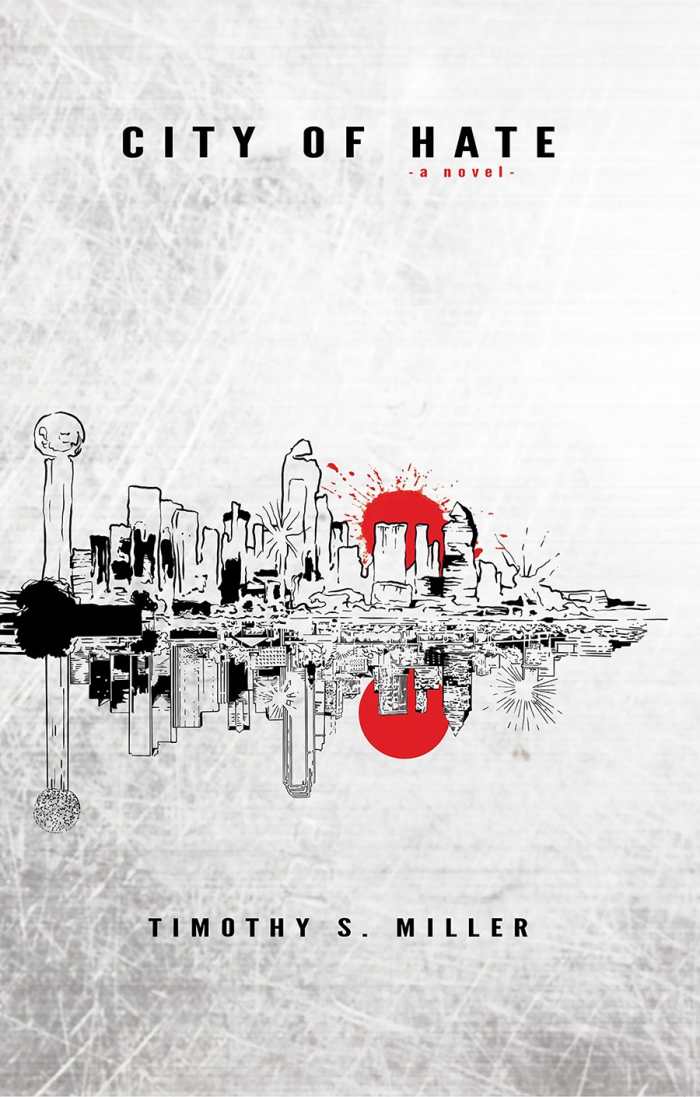
Timothy S. Miller
Goliad Media Group
Softcover $16.00 (236pp)
978-0-9985554-4-7
Buy: Local Bookstore (Bookshop), Amazon
Timothy S. Miller’s City of Hate is a dark thriller featuring overlapping conspiracies.
Hal is a recovering alcoholic whose viewpoint is melancholic. His best friend, Lemon, is a conspiracy theorist who sees nefarious plots lurking behind every action. These two loners are thrown into a major maelstrom after a mutual friend is found dead, a sleazy private eye winds up murdered, and a conservative Texas politician is blackmailed with a series of salacious photographs.
The novel begins in media res, and Hal is something of an unreliable narrator. He delivers a running commentary on subjects including phone sex and the filthiness of Lemon’s living conditions. His staccato style, with its brutish, proletarian language, results in dirty realism, which is balanced by the text’s moments of magical realism, including the random appearance of the image of the Virgin Mary underneath a Dallas highway underpass.
Hal is also a bumbling investigator, which has both a lot to do with the fact that he is a suspect for most of the novel and because he’s not a real detective. Still, his dedication and life on the fringe leads to a story that does not play by the rules. The conspiracy’s true shape is concealed until the book’s end, when the interconnected deaths, and their attachment to the blackmail scheme, are revealed in full. The conclusion is madcap; supernaturalism mixes with reality as Hal manages to find a kind of religious transcendence out of the web of death.
Mature themes, including sex and death, are handled in a frank manner and alongside more than a few four-letter words. Blood is spattered throughout the tale, whose characters are gruff, their means of speaking and dealing with tough situations unabashed.
City of Hate is a bizarre and beautiful crime novel about conspiracies and political malevolence.
BENJAMIN WELTON (April 27, 2020)
Spice Apothecary
Blending and Using Common Spices for Everyday Health
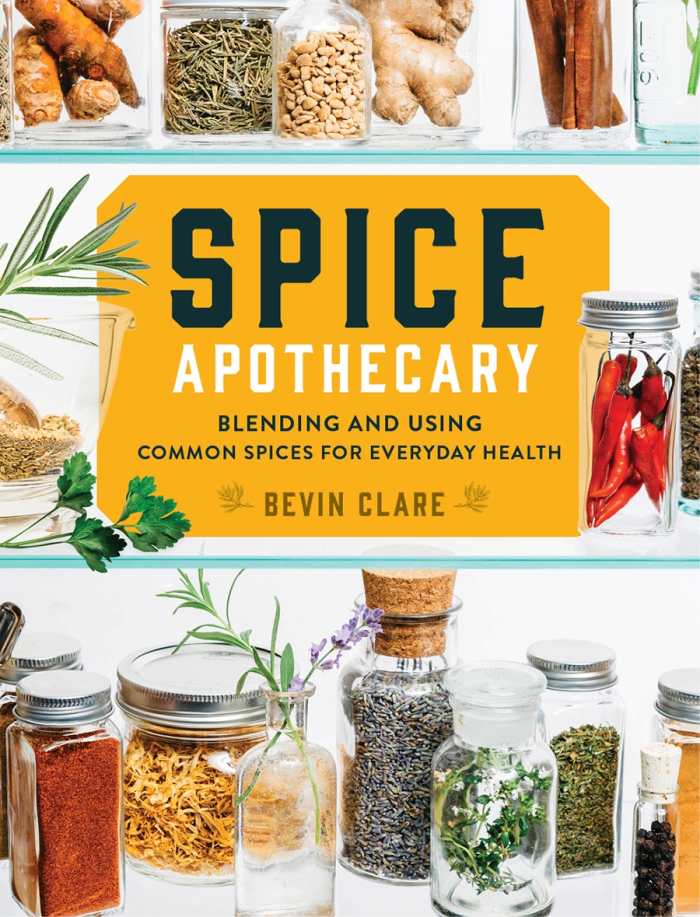
Bevin Clare
Storey Publishing
Softcover $18.95 (176pp)
978-1-63586-083-2
Buy: Local Bookstore (Bookshop), Amazon
If you are in tune with using food as medicine, Spice Apothecary will earn a prized place on your shelves. In it, Bevin Clare summarizes the healing properties that are inherent to various plants and traditional remedies within many different cultures. A more detailed exploration of the health-boosting qualities of some common spices follows, with simple recipes to easily incorporate them into your daily diet.
Organized and approachable, this is an enthusiastic introduction to herbalism. Its chapters review the healthful compounds of plant families, showing how phytochemicals interact with each other and within human cells. Zippy illustrations, charts, and luminous, well-labeled color photographs document spice varieties, and there’s important information for obtaining the right kind of spices, along with storage data and daily culinary dosages.
Nineteen essential spices that are recommended for apothecary work are detailed. Home cooks will likely have most in their spice cabinet already; others, like Calendula and Holy Basil, are less on culinary radars. Clare highlights each spice’s effects on human anatomy and physiology, making it clear how to use them in everyday blends, teas, and delicious dishes from soups to ice cream, tailored to your specific health needs. Got aching joints? Try the Heart Synergy Fudge, which is packed with cinnamon, turmeric, black pepper, and cayenne. Cold coming on? A warming cup of Hot Ginger Lemonade will help to boost your immunity.
Clinical studies about the healing properties of these essential spices are listed in the bibliography, while sidebars relay the traditional uses of spices in Nigeria, India, Crete, and Zanzibar to zest things up.
With the focus on readily available and affordable spices and recipes, Spice Apothecary makes it easy to explore new ways of preventing and combating illness. As Clare notes, “We have an opportunity to fill our lives (and plates) with spices and find pleasure in their delicious medicine.”
RACHEL JAGARESKI (April 27, 2020)
Barbara Hodge